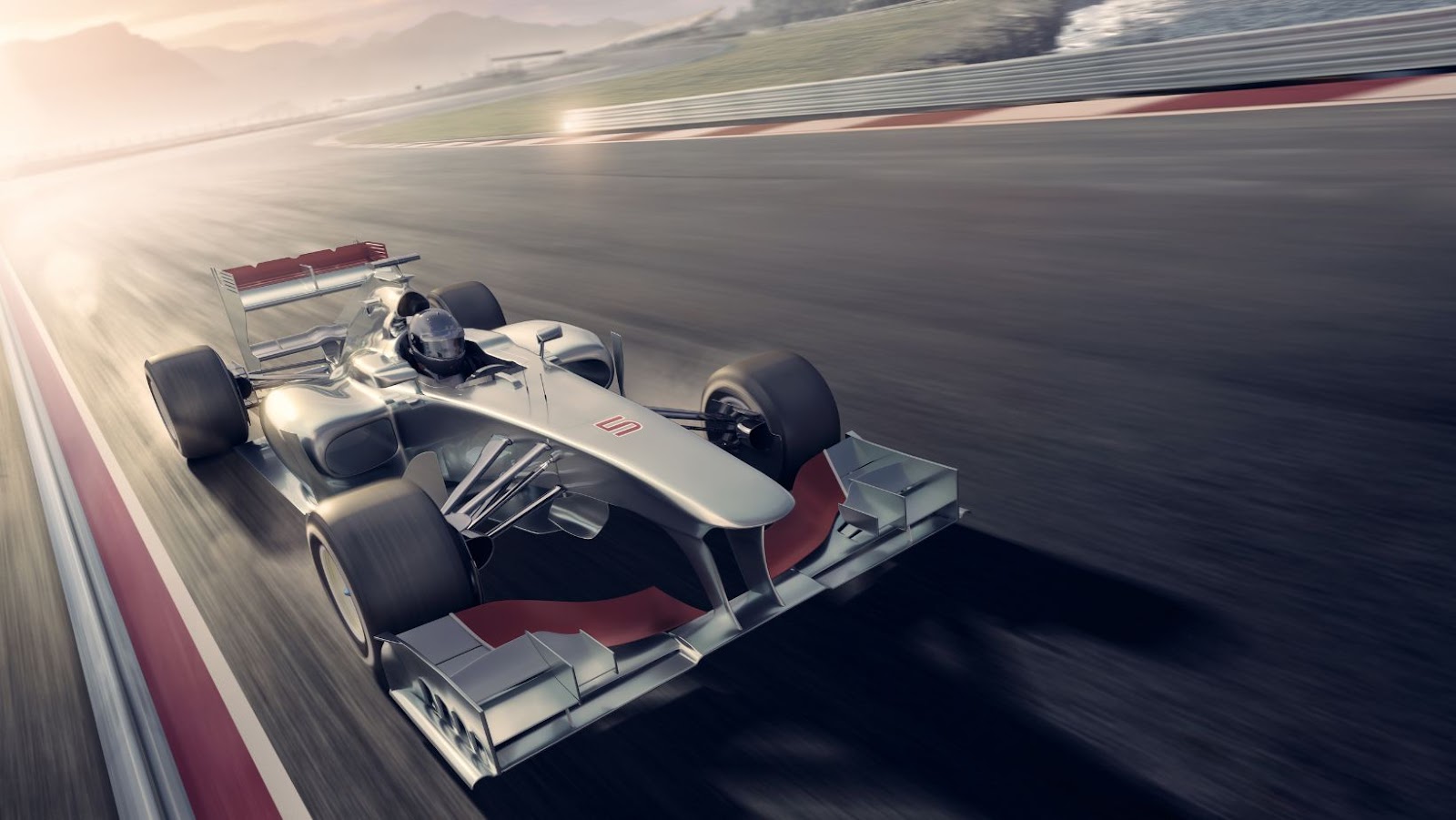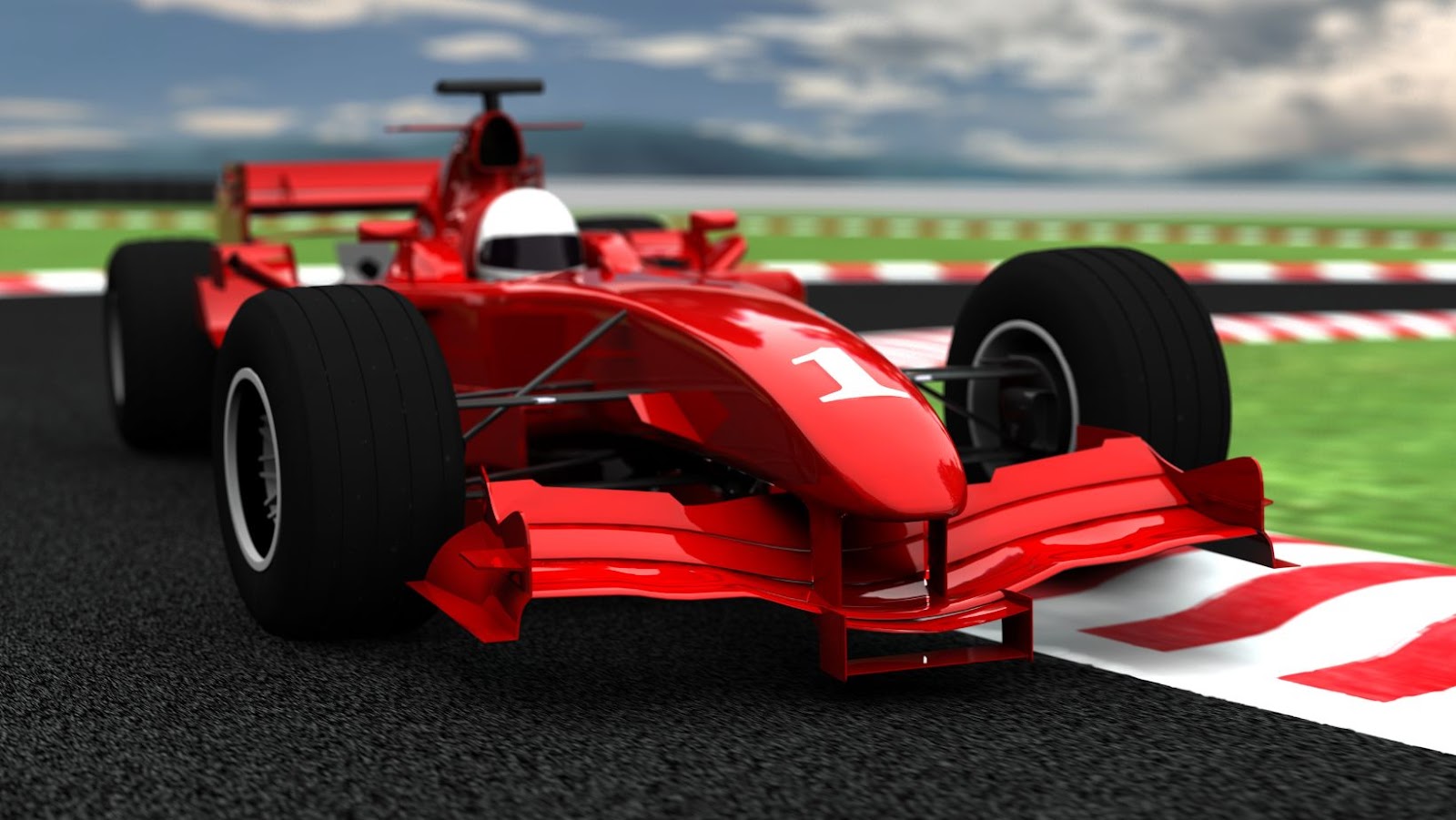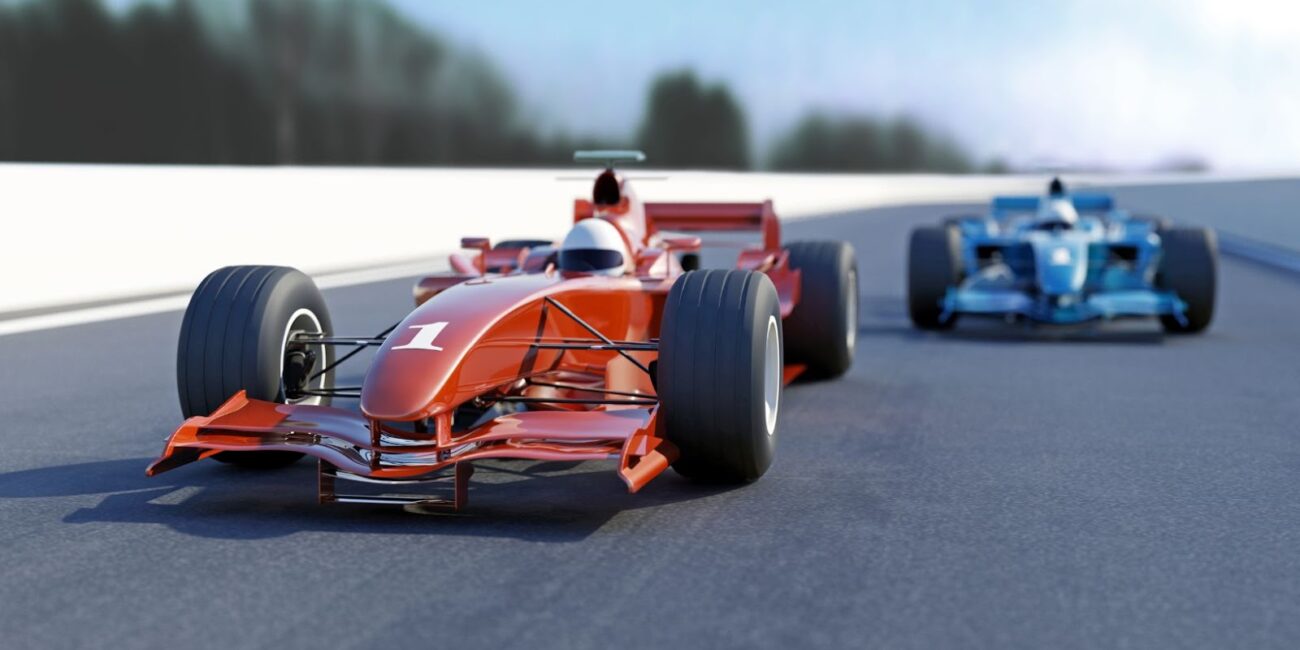Introduction To Formula 1 Cars Safety Features
Formula 1 Cars Safety Features are designed to ensure the safety of drivers in high-speed racing events. These features are crucial and play a vital role in Formula One Racing. They not only provide protection to drivers but also enhance their performance on the track.
- Impact Resistance: Formula 1 cars are built with materials that help dissipate energy from an impact to minimize driver injury.
- Aerodynamics: The aerodynamics of these cars reduce drag and improve downforce for better handling, stability, and speed.
- Cockpit Safety: The cockpit is designed to protect the driver’s head and neck in case of an accident. It includes a helmet, specialized seat belts, and headrests.
- Braking System: The braking system is one of the essential safety features that allows drivers to slow down or come to a stop at high speeds efficiently.
- Suspension System: The suspension system helps maintain tire contact with the surface and keeps the car stable during acceleration, deceleration, and cornering.
- Fire Suppression System: The fire suppression system rapidly extinguishes small fires that might occur during races
Safety is taken seriously in Formula 1 Racing. Besides these standard safety features, drivers must wear protective gear like gloves, shoes, racing suits etc.
Focusing on improving safety features can significantly reduce accidents in this sport. Implementing crash avoidance technology could be a step ahead where computer systems would alert drivers if they’re getting too close to other drivers or objects on the track.
All changes related to safety features will require research and testing before being fully implemented. While some changes may be time-consuming and costly, it will help ensure better protection for Formula One Drivers over time.
Formula 1 cars are so safe, they make my ex’s emotional walls look like a cardboard box.
Structural Safety Features
To ensure the safety of drivers during high-speed races, Formula 1 cars rely heavily on their structural safety features. The monocoque chassis, roll cage and anti-intrusion panels, frontal and side impact structures, and halo cockpit protection are essential components of a Formula 1 car. In this section, we will explore each of these sub-sections and discuss how they contribute to the overall safety of the driver.
Monocoque Chassis
The innovative chassis design that utilizes the body shell as a load-bearing structure is commonly known as Monocoque. This type of structure can be found in various vehicles, including automobiles, airplanes, and even bicycles.
| Feature | Description |
| Strength | The monocoque chassis provides greater strength when compared to other structures by distributing the loads evenly across the entire body shell. |
| Lightweight | A monocoque chassis eliminates excess weight by getting rid of separate load-bearing structures such as a traditional frame or roll cage. |
| Fuel Efficiency | The lightweight nature of the monocoque chassis improves fuel efficiency levels as it requires less power to move. |
Due to its unique design and construction process, a Monocoque Chassis enables for complete stress management within its structure. It distributes the loads evenly throughout each part, allowing for improved impact resistance and structural integrity. A crucial feature that sets Monocoque apart from other conventional structures is its ability to reduce excess weight while maintaining necessary structural support.
This is accomplished by creating various configurations using different materials with different densities. Studies have shown that car manufacturers using Monocoque Chassis have been able to improve their crash test ratings significantly. For example, Euro NCAP awarded the Citroen C5 Aircross an impressive five-star rating due to its Monocoque Chasis’s excellent safety performance. Don’t worry about getting rear-ended, your car’s roll cage will keep you safe. Just make sure you’re not the one doing the rear-ending.
Roll Cage and Anti-Intrusion Panels
The safety features of the vehicle include a protective structure that consists of a sturdy frame and panels. This protective structure is commonly known as the Roll Cage and Anti-Intrusion Panels. It is designed to prevent deformation of the vehicle body during an accident.
Below is a detailed table that showcases the important details about these safety features:
| Component | Material Used | Purpose |
| Roll Cage | Chromoly | Provides Vehicle Stability |
| Intrusion Panels | High-Strength Steel | Helps in protecting occupants from side impact |
Apart from providing stability, these safety features also ensure passenger safety during a car crash. The Roll Cage provides increased rigidity and strength to the vehicle’s body, whereas Anti-Intrusion Panels help in minimizing injuries due to side impacts.
It is worth noting that high-performance vehicles rely heavily on these features to minimize damage to both passengers and the vehicle. In addition, modern vehicles also employ advanced sensors to detect accidents early so that these structures can deploy quickly, protecting everyone inside the car.
In recent years, advancements have been made to improve the material and design of these safety features. Early versions of Roll Cages were primarily made from ordinary steel, but now, most cars feature high-strength steel or alloys like Chromoly for added protection.
Overall, Roll Cage and Anti-Intrusion Panels play a significant role in ensuring safe travels for any passenger.
I guess you could say that cars with good frontal and side impact structures are the real superheroes of the road, always ready to take a hit for their passengers.

Frontal and Side Impact Structures
When discussing the structural safety features in automobiles, it is crucial to highlight the efficient mechanisms geared towards addressing both frontal and side impacts. One of the most effective methods involves the installation of crash boxes, which absorb impact energy during a collision. Furthermore, side door beams are essential in ensuring passenger safety by minimizing intrusion during an accident.
A table showcasing statistical data can also shed light on the effectiveness of these measures. For instance, research has shown that frontal airbags reduce driver deaths in frontal crashes by 29%. Additionally, installing side airbags reduces fatality risk for drivers involved in left-side crashes.
It’s important to note that alongside these structural safety features, vehicles could additionally benefit from modern technologies such as adaptive cruise control and autonomous emergency braking systems.
Taking these statistics into consideration highlights the importance of investing in well-designed automobile safety features. Failing to do so could lead to disastrous consequences for drivers, passengers and pedestrians alike. Only by understanding how pivotal structural safety features are, we can take action towards changing any lacking protective measures currently being used.
If there’s one thing you can count on, it’s the Halo Cockpit Protection to keep you safe from both rogue debris and potential co-driver-induced concussions.
Halo Cockpit Protection
Professionals in the aviation industry look towards innovative safety solutions to prevent fatal accidents. One such solution is the implementation of Cockpit Protection Systems. The High-Angle Laminar Organizer (HALO) system is a proven smart solution that aims to protect the pilots’ head and neck in severe crashes.
A table can demonstrate the features of a HALO Cockpit Protection more effectively:
| Features | Description |
| Material | Carbon fiber and titanium rods integrated with Kevlar panels for added strength and stability. |
| Positioning | Mounted directly on the cockpit coaming, ensuring it does not obstruct the driver’s sight but offers maximum impact protection. |
| Design Elements | The main structure consists of two titanium side plates mounted horizontally across the car. |
The HALO concept employs a unique construction approach: metal-ceramic interface hybrid bonding technology. This technology provides maximum durability against any kind of high-energy impact while maintaining low weight profiles. The innovative combination of different materials makes this system very efficient to work as per its duty.
According to new regulations in Formula 1 racing, all teams must implement halo cockpits for their drivers’ safety by 2022. As reported by Motorsport.com on March 4th,2021: “All FIA-certified championships aiming to implement cockpit protection will only allow Halo-type designs”.
Move over, Superman, aerodynamic safety features are here to save the day (and your flight).
Aerodynamic Safety Features
To optimize the safety of Formula 1 cars without compromising speed, aerodynamic safety features are essential. In this section, we will focus on the aerodynamic aspect of safety features and discuss key aspects of rear wing and diffusers, side pod and bodywork design. These sub-sections hold the solution for maintaining high-speeds while keeping in mind the safety of drivers.
Rear Wing and Diffusers
This segment discusses the aerodynamic safety features that aid vehicles in maintaining stability and maneuverability at high speeds. Here, we will talk about the equipment scientifically termed as Rear Wing and Diffusers.
We have prepared a table to preview the mechanical specifications of these integral parts. Please refer to the following details for a comprehensive understanding of their functions:
| Rear Wing | Diffusers |
| Adds downward force | Rationalizes airflow |
| Located on rear top section | Positioned beneath the vehicle |
| Large surface area | Refined, narrower design |
| Tends to create drag | Minimizes air resistance |
Additionally, it is noteworthy that both these equipment mutually assist each other by reducing air turbulence from back and under portions. Along with providing improved handling, they also help increase fuel efficiency.
Interestingly, these features have been mainly inspired by the field of aeronautics and aviation. In pursuit of achieving higher speeds while maintaining stability, aviators have conducted extensive research to understand air currents’ behavior around flying vehicles. This collated knowledge has now been adapted to ground transportation for increased safety and maneuverability.
Who needs a side chick when you have a Side Pod that keeps you safe on the track?
Side Pod and Bodywork Design
The design of the vehicle’s side pods and bodywork involves intricate aerodynamic features to ensure optimal safety. In these complex designs, airflow plays a significant role in ensuring efficiency. The following table shows the different elements that are considered while designing side pods and bodywork.
| Component | Purpose |
| Air Intake | To provide cool air to engine |
| Side Pod and Bodywork | To channelize the air flow around the car |
| Crash structure | To protect the driver |
| Wheel Arch | To reduce drag force |
These are only a few of the many significant elements of side pod and bodywork design. Notably, attention is paid to every aspect of airflow pressure during its streamlined assembly. It’s been discovered that utilizing specialized double diffusers for side pod downs can increase energy production significantly. Developing these unique features has been crucial to enhance both speed and stability during high-speed driving conditions. Interestingly, the Ferrari F2004 was one such vehicle with advanced side pod design, which helped Michael Schumacher win his 7th world championship in 2004 by winning 13 out of 18 races in that season alone.
The progression towards highly aerodynamic design has revolutionized motorsports and become an essential trait for modern race cars’ success on track. Brace yourself for some serious stopping power, because we’re about to dive into the world of braking system safety features.

Braking System Safety Features
To ensure that you are safe while speeding in those Formula 1 cars, the braking system safety features come as a savior. This section on braking safety features equipped in Formula 1 cars will acquaint you with a variety of safety features that you should be aware of, which are Carbon Fiber Brakes, Brake-by-Wire System, and ERS.
Carbon Fiber Brakes
Carbon Composite Braking System
A carbon composite braking system, also known as a carbon-carbon brake, is a high-performance braking technology used in automobiles and aircraft. Made of carbon fibers combined with silicon carbide, the composite material provides superior heat resistance and better performance than traditional steel brakes.
| Carbon Fiber Brakes | |
| Material | Carbon Fibers and Silicon Carbide |
| Heat Resistance | Can withstand temperatures over 1500 degrees Celsius |
| Performance | Provides reliable and consistent stopping power |
Compared to steel brakes, a carbon composite braking system can give a vehicle or aircraft more consistent stopping power even during repetitive high-speed operations. This technology also reduces wear on tires and offers longer-lasting durability.
Upgrade your vehicle or aircraft with this advanced technology to experience improved control, reliability, and performance on the road or in the sky. Stay ahead of the game by investing in top-of-the-range technologies such as this one. Don’t let yourself miss out on the benefits that come from embracing new advancements in vehicle or aircraft safety.
Brake-by-wire system: because who needs physical brake pedals anyway?
Brake-by-Wire System
A brake mechanism regulated by electronic signals rather than the traditional hydraulic system is known as a Touchless Brake System. This system has been transfused in modern-day cars to increase safety and responsiveness.
| Advantages | Disadvantages |
| Less problematic and simpler than hydraulic brake systems | Inadequate input precision because of signal interference and delay |
| Acceleration can be offset by braking, reducing stopping distances. | Reliability concerns due to mechanical glitches and power interruptions |
Touchless braking also enables automatic interventions that interpret sensor information to prevent accidents, including forward-collision warnings, lane-change assist, emergency autostop systems, etc. The brake-by-wire system’s direct association with other components shows it’s estimated that it could save fuel up to 2%.
Pro Tip: It is best not to attempt self-repair on any part of the braking system without first consulting an experienced mechanic or dealership technician.
Why rely on hope and prayer when the ERS can save your brakes from becoming toast?
ERS
Electronic Stability Control (ESC) is a significant safety feature that uses electronic sensors to monitor and control vehicle stability. It is responsible for reducing the risk of skidding, drifting or loss of traction during sudden turns or emergency maneuvers. With its advanced technology, it can detect any variation in steering angle, vehicle speed, and lateral acceleration.
ESC has the potential to decrease the risk of accidents caused by overreacting to harsh weather conditions or other external factors. The system functions by selectively braking specific wheels to keep the driver in control and maintain a stable trajectory. It also employs an engine management system to regulate power output when necessary.
Moreover, ESC works seamlessly with other braking systems like ABS to deliver maximum safety benefits during emergency situations. This feature has been required in all new vehicles since 2012 after proving its effectiveness in reducing fatal accidents on the road.
Pro-Tip: Always ensure that your ESC system is activated while driving, as it offers an additional layer of safety during unpredictable road conditions.
Looks like this car has more safety features than a nuclear bunker, but let’s hope we don’t have to use the fire extinguisher anytime soon.
Fire Safety Features
To ensure fire safety in Formula 1 cars and minimize the risk of accidents caused by fire, various fire safety features have been implemented in these cars. In order to protect the passengers and the driver, this section discusses the fuel tank foam barrier, fire extinguisher system, and battery safety measures as solutions.
Fuel Tank Foam Barrier
The foam-based barrier that prevents fuel tank explosions is a crucial fire safety feature in many industries. This barrier provides extra protection against any explosion or ignition within the fuel tanks of large machinery, airplanes, and more.
For a detailed understanding of this safety feature, here’s a table outlining its essential aspects:
| Fuel Tank Foam Barrier Information | |
| Purpose | Prevents explosions/ignition within fuel tanks |
| Material | Foam-based |
| Locations | Large machinery, airplanes, industrial settings |
| Benefits | Extra protection against fires and explosions |
Additionally, the foam used in this barrier is highly resistant to gasoline and other hazardous materials. It expands when exposed to heat or fire to create a protective seal over the fuel.
Pro Tip: Proper installation and maintenance of the fuel tank foam barrier can significantly reduce the risk of fires and explosions in industrial settings.
Who needs a superhero when you’ve got a fire extinguisher system?
Fire Extinguisher System
Professional Explanation: An Automated Fire Suppression System
A fire extinguisher system is an automated fire suppression system that consists of different components. It is designed to detect a fire and then extinguish it without the need for human intervention. The components usually include detection devices like smoke sensors, heat detectors, and control panels, among others.
Table: Fire Extinguisher System Components:
| Component | Function |
| Smoke detectors | Senses the presence of smoke in the environment |
| Heat detectors | Measures the ambient temperature |
| Control panels | Receives signals from detection devices |
| Carbon dioxide cylinders | Releases carbon dioxide to suppress fires |
| Discharge nozzles | Distributes carbon dioxide evenly in protected areas |
Unique Features:
The automatic fire suppression system has some unique features like versatility. The system can be customized to fit any type of building design and function. It can also be used to protect expensive equipment such as computer servers or generators in case of a fire outbreak.
True Story:
In May 2019, a chemical plant explosion occurred in Illinois, USA. One person died while several were injured. This could have been prevented if proper safety measures had been taken and an automated fire suppression system installed. Therefore, there is a need for every public place/building to have an emergency response plan that includes an automated fire suppression system like the one discussed above to prevent such occurrences from happening.
Remember, the only thing worse than a dead battery is a live one in the wrong hands.
Battery Safety Measures
Battery Safety Protocols for Efficient Fire Safety Features
When it comes to ensuring fire safety, following proper battery safety protocols is crucial. Here are some measures that can protect you from a potential disaster:
- Use the correct type of battery for the intended use.
- Avoid mixing batteries with different voltages and chemistry types.
- Store batteries in a cool, dry place away from heat sources.
- Dispose of old or damaged batteries promptly and correctly.
- Always follow manufacturer’s instructions concerning charging/discharging procedures.
Apart from these measures, it is imperative to choose high-quality batteries that meet appropriate industry standards to maintain optimal battery performance.
Incorporating these precautions significantly reduces the risk of battery-related fires. Also, periodically checking equipment and monitoring your home for signs of potential danger will ensure maximum protection.
Keep your eyes on the road and hands on the wheel – unless the car has a self-driving feature, then feel free to take a nap.

Driver Safety Features
To ensure driver safety features in Formula 1 cars with a focus on how fast these cars go, several key components are in place. Safety harnesses, helmets and visors are mandatory features to protect the driver’s head and neck in case of a crash. Additionally, medical cars and helicopters serve as a crucial part of a fast response system in case of an accident.
Safety Harnesses
When it comes to protecting oneself in a vehicle, there are measures you can take beyond just wearing a seatbelt. One of these measures is the implementation of Restraint Systems. Restraint systems could come in various forms, but one common type is the Safety Harnesses, which offer more comprehensive protection than your typical seatbelt.
- The classic three-point safety belt that provides both chest and hip protection
- A four-point belt system that offers even greater support with an added strap between the legs
- A five-point harness that consists of shoulder, chest, hip, and leg restraints
- Commonly used in race cars and other high-performance vehicles
- Offers superior comfort by distributing force pressure throughout the driver’s torso
- Frequently adjustable to ensure a secure fit for any driver’s body shape and size.
When fastened, Safety Harnesses provide enhanced security and stability as they minimize movement during collision impact. Therefore while such restraints are seemingly more restrictive than standard seat belts, The increased safety benefits outweigh any reason for discomfort. Interestingly enough, recorded cases have shown at least over 75% survival rate when seat belts combine with Restraint Systems like Safety Harnesses.
Not only do these systems improve survivability rates during accidents, but after seeing its benefits In Motorsport racing where fatal accidents occur frequently before full-scale adoption of Safety Harnesses was implemented showed drastic drop-in fatalities among racers. Sorry to disappoint, but helmets and visors won’t protect you from your own terrible driving skills.
Helmets and Visors
Wearing Protective Headgear and Face Shields
Helmets and visors are essential safety features for drivers. They prevent head and face injuries during accidents and protect against debris, harsh weather conditions, and sunlight glare. Here are some key details about helmets and visors:
- Choose helmets that meet safety standard certifications from reputable organizations like DOT, ECE, or Snell.
- Ensure proper fit by measuring the circumference of your head at its widest point and selecting a helmet size accordingly.
- Replace your helmet every five years or after a significant impact.
A well-ventilated helmet can keep you cool on long rides while face shields provide additional protection from wind noise, bugs, dust or rain. They come in different types-tinted (for bright sunny conditions), clear (for everyday situations), photochromatic (that darken or lighten depending on sunlight) etc.
For maximum visibility while driving, clean your visor regularly using only designated cleaning products or soapy water. Avoid wiping with abrasive materials to prevent scratches that could hinder clarity.
Pro Tip: Invest in high-quality helmets with dual-certification for road driving and sport riding as they offer optimal protection and optimal performance.
If the medical car and helicopter are your backup plan while driving, perhaps it’s time to consider the safety features in your own vehicle.
Medical Car and Helicopter
Medical Emergency Response Vehicles
Medical emergencies can occur at any time, and therefore, it’s essential to have proper transportation available to respond promptly. Medical emergency response vehicles like ambulances, medical cars, and helicopters are advanced modes of transportation equipped with specialized medical equipment and personnel. These vehicles are meticulously designed to ensure that the patient is provided with the best possible care before being transported safely to the hospital.
With the increasing demand for more organized and efficient emergency services, medical car and helicopter services have become an indispensable part of emergency medical transportation. Let’s take a look at some of the critical features of these vehicles in the table below:
| Features | Medical Car | Helicopter |
| Max speed (km/h) | 120-140 | 240-290 |
| On-board critical care facilities | Yes | Yes |
| Capacity | 1 patient | 2-3 people |
| Real-time communication systems | Yes | Yes |
In addition to these key features, a medical helicopter has distinct advantages over an ambulance or a medical car. Helicopters can land directly on highways or remote locations where a conventional ambulance or medical car cannot reach quickly. This feature is particularly useful when dealing with severe trauma incidents such as major accidents or natural disasters.
It’s important for us all to be aware of such emergency response services and use them judiciously in case of emergencies. A little bit of awareness goes a long way in saving lives during crucial times. Hence, it is necessary always to keep their contact information handy so that they can be called upon whenever needed.
Don’t hesitate to call for a medical car or helicopter service the next time you find yourself or someone around you in dire health situations. Remember that every second counts in saving lives!
Remember, no safety feature can protect you from the biggest danger on the road: other drivers.
How Fast Formula 1 Cars Go
The safety features of Formula 1 cars are essential in ensuring the protection of drivers during high-speed races. These features include:
- A strong, lightweight chassis
- Seatbelts and harness systems
- Roll cages
- Aerodynamic designs that contribute to stability and control
To further enhance driver safety, medical teams are stationed throughout the circuit and cars have on-board telemetry systems that track vital signs. Additionally, regulations require constant safety updates and rigorous testing procedures for all cars competing in Formula 1 events.
It’s interesting to note that despite the incredible speeds these vehicles reach (up to 230 mph), F1 accidents are rare due to years of research into refining these safety features. In fact, before mandatory safety improvements were implemented in the 1960s and beyond, multiple fatalities occurred each year at F1 events. It is thanks to continued efforts towards improving race car safety that today’s proceedings resemble just as much of a technological masterpiece as they do a thrilling motorsport spectacle.
Speeding tickets for Formula 1 cars are non-existent, but I guess that’s because they’re always in the fast lane.
Formula 1 Cars Safety Features
To address the topic of how fast Formula 1 cars go and its safety concerns, here are some frequently asked questions that people often ask:
| FAQs related to How Fast Formula 1 Cars Go | Answer |
| What is the fastest speed a Formula 1 car can go? | A Formula 1 car can reach a top speed of around 225 mph. |
| What measures are taken to ensure driver safety? | Several features have been introduced, including roll bars, fire extinguishers, helmet requirements and seatbelts. |
| Are there any G-forces exerted on the drivers? | Yes, a formula one car generates up to 5G under braking or acceleration which puts significant pressure on the driver’s body. |
It is also noteworthy that the FIA has set up strict regulations for driver’s safety in F1 racing events. They conduct rigorous check-ups to ensure compliance with standards.
Did you know that a Formula 1 car can produce downforce up to two times its weight thanks to aerodynamic features? (Source: formula1.com)



